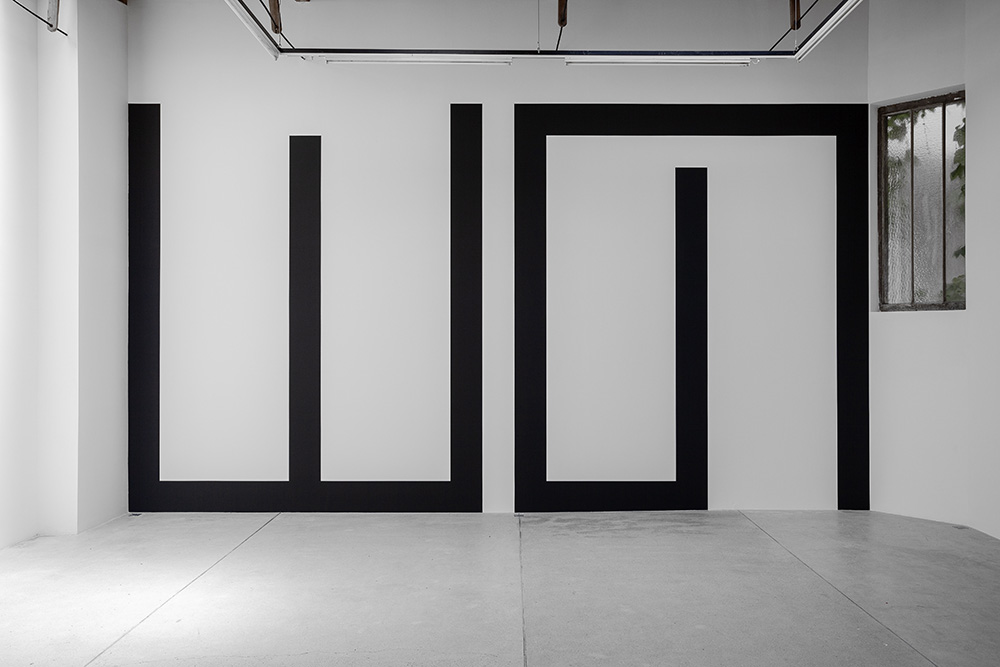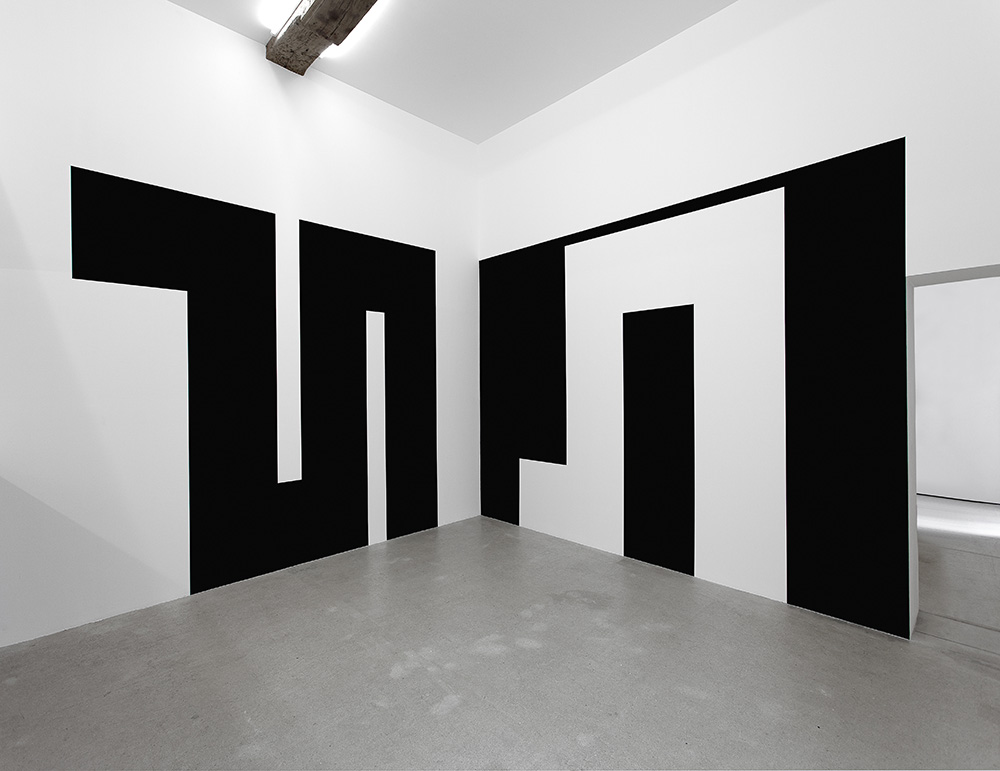ART CITIES:Paris-Julije Knifer
 In 1960 the first meander-painting was created by Julije Knifer (23/4/24-7/12/2004), and with it he discoveredthe ideal form of expression for his “anti-painting”. By using monotone rhythms and the intense contrasts of black and white, he resisted the criteria of the modernity. Knifer used this consciously chosen formal expression, from 1960 until his death in 2004. He himself defined it as “non-development”, as the concept for the elimination of any kind of development under the principal of the repetition of an almost identical motif.
In 1960 the first meander-painting was created by Julije Knifer (23/4/24-7/12/2004), and with it he discoveredthe ideal form of expression for his “anti-painting”. By using monotone rhythms and the intense contrasts of black and white, he resisted the criteria of the modernity. Knifer used this consciously chosen formal expression, from 1960 until his death in 2004. He himself defined it as “non-development”, as the concept for the elimination of any kind of development under the principal of the repetition of an almost identical motif.
By Dimitris Lempesis
Photo: Galerie Frank Elbaz Archive
The exhibition “Mural Paintings” is the first in France dedicated to Julije Knifer’s mural paintings. Julije Knifer was a Croatian abstract painter and a founding member of the 1960s Croatian art collective known as the Gorgona Group, whose members from 1959 to 1966 were: Miljenko Horvat, Ivan Kožarić, Marijan Jevšovar, Dimitrije Bašičević, Matko Meštrović, Radoslav Putar, Đuro Seder and Josip Vaništa. The Gorgona group was known for their ephemeral and intellectual approach to art-making and is considered a predecessor of the Conceptual Art movement which thrived in Western Europe years later. Knifer’s oeuvre involves the exploration of a single form “the meander”, a geometric maze-like form composed of only horizontal and vertical lines, almost exclusively in black and white. Knifer’s repetition of a single motif across his entire career addresses the artistic problem of depicting time. In Knifer’s words, “I realized that I didn’t want to create a single painting, a work that would be self-contained and complete in and of itself. I understood that my drawings and my own images were only one in a series of connected similar acts”. Before adopting the concept of meander, there were two types of processes in Julije Knifer’s artistic approach. The first was the repetition of a single pattern, indefinitely varied: between 1949 and 1952 Knifer daily drew his self-portrait in the same format. The second was the reduction of pictorial means, from 1952 in a series of landscapes of Stenjevec (one of the districts of Zagreb), his language becomes more and more bare. In 1959 during his visit to Documenta in Kassel, Knifer discovered large-scale contemporary American paintings. He was particularly impressed by Barnett Newman and his painting “Cathedra”. Knifer began very early to explore the intricate relation between space and painting. In 1961, he painted “Meander in the Corner” a ground-breaking work for the artist as it abandoned the bi-dimensional space of the wall to form a three-dimensional angle in the corner of the room. With the meander the variation of a single motif and the reduction of means of expression, are associated. Although at that time we would have thought he had finished his artistic research, he was just starting. It was then that the meander became his distinctive sign, his self-portrait. By varying the relationship between the black and white areas, Knifer is able to calibrate a different dance between solid and void, dark and light. At the same time, the size and placement of the “meander” within the painting’s horizontal or vertical rectangle registers the pressure of the form against the physical boundaries. From 1971 Knifer started to produce large-scale Meanders on exterior and interior walls. His first mural was created on the walls of Elementary school Gornje Vrapče, for the television show “Urban Painting” moderated by art historian Vera Horvat-Pintarić. Later he painted the lobby of SC Cinema (1979), the wall in Branimir Street (1987), PM Gallery (1987) – all locations in Zagreb, and in 1990, the Catalog hall of a university library in Dijon. In 1975, in the quarry near Tübingen with help of many collaborators, he painted a 20×30 m large banner. The “Arbeitsprozess”, as it was named, was documented with photographs and video. In 1988, at the PM gallery Knifer devoted an exhibition exclusively to his mural paintings, exemplifying their personal importance to him. Among the murals he created in France two stand out: a long meander in the Dijon Library and a dense flow meander at Jean-Jaurès underground station in Toulouse. In 2001, when representing Croatia at the Venice Biennale, Knifer painted the walls of Palazzo Querini Stampalia.
Info: Curators: Danka Sosic & Zarko Vijatovic, Galerie Frank Elbaz, 66 rue de Turenne, Paris, Duration: 9/9-28/7/18, Days & Hours: Tue-Sat 11:00-19:00, www.galeriefrankelbaz.com


